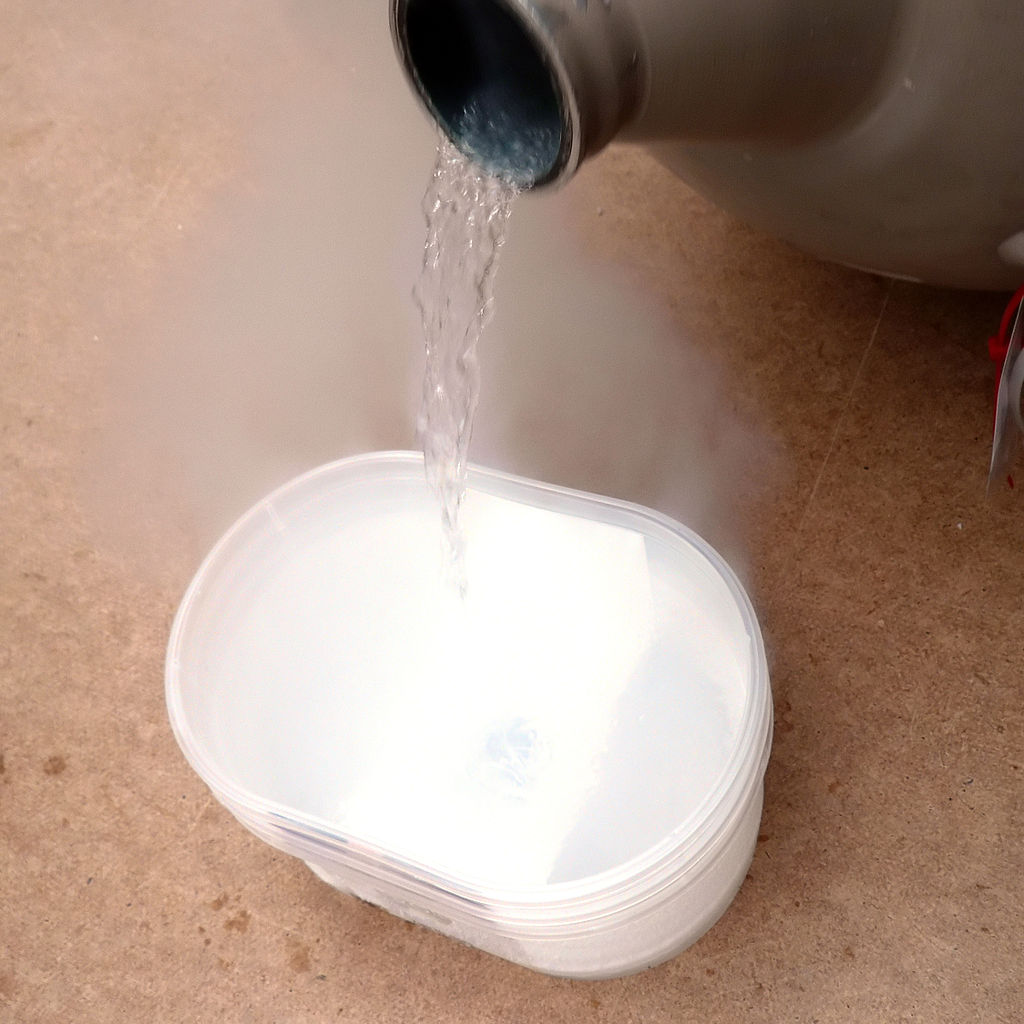Exercise 4
- Page ID
- 36893
Solutions, hints and answers can be found in the Solutions Page. It is strongly recommended that students do not look at the solutions until after completing or attempting to complete the problems. Going straight to the solutions will reduce the point of the exercises.
Q1
Consider the corrosion of iron via the following reaction:
\[4Fe_{(s)}+3O_{2\; (g)} \rightarrow 2Fe_2O_{3\; (s)}\]
How much volume of pure oxygen reacts with 6.66 grams of iron completely at STP?

Figure: Heavy rust on the links of a chain near the Golden Gate Bridge in San Francisco. from Wikipedia.
Q2
Ethanol is produced by fermentation of sugars by yeast. If 60.0 ml Ethanol (\(CH_3CH_2OH\)) with the density of 0.789 g/ml reacts with 17.8 L \(O_2\) at 25°C and a pressure of 2.00 atm to give \(CO_{2(g)}\) and \(H_2O\) via a combustion reaction. When the reaction goes to completion, what is the volume of liquid water produced?
Q3
56.0 g liquid nitrogen is injected into a 10.0 L sealed and empty container. If the surrounding temperature is \(37 ^oC\), what is the final pressure in the container? If this container is already filled with \(Ne_{(g)}\) at 770 mmHg, what will be the partial pressure of \(N_2\) and \(Ne\)? What will be the total pressure in the container?

Figure: Liquid nitrogen pour from a dewer. from Wikipedia.
Q4
A 12.0 L container contains a mixture of carbon dioxide and helium gas. The room temperature is \(40 ^oC\). If the mole fraction of carbon dioxide is one third of the mixture and its partial pressure is 155.0 Torr, how many moles of helium gas in the container?
Q5
Water gas is a mixture of carbon monoxide and hydrogen. This gas is made by passing steam over a red-hot coke. This product is useful but flammable and poisonous.
\[H_2O_{(g)} + C_{(s)} \rightarrow H_{2(g)}+ CO_{(g)}\]
A student wants to collect some water gas for further investigation. For safety reason, he collects the products in a 15.0 L sealed container. 36.0 g steam reacts with a piece of \(300 ^oC\) carbon and water gas has the same temperature as carbon. Assuming all water is consumed in the reaction, please calculate the total pressure and partial pressure of hydrogen gas and carbon monoxide.
Q6
A chemist notices that one of many organic solvents is leaking from the hood. The rate of effusion of this organic gas is 2.866 mL/sec while the effusion of oxygen gas is 3.640 mL/sec. What is the molar mass of this organic solvent?
Q7
If 193 mL of \(O_2\) were collected over water at an atmospheric pressure of 762 mmHg and a temperature of \(23.0^oC\). How many grams of oxygen were collected?
Q8
Gas from a burning cigarette lighter was collected over water. After combustion of all hydrocarbon fuel in the lighter, the lighter was 128 mg lighter. The volume of the collected gas was 0.060 L. If the temperature and pressure in the room were at \(35^oC\) and \(1 atm\), what is the molar mass of the gas and identity of the hydrocarbon fuel? Note: Partial pressure of water vapor at \(35^oC\) is 42.2 mm Hg.
Q9
Assuming both temperature (\(130^oC\)) and pressure are kept constant during the oxidation of titanium:
\[Ti_{(s)} + 2 Cl_{2(g)} \rightarrow TiCl_{4(g)}\]
How many liters of \(TiCl_4\) gas will be produced after 10.0 L of chlorine react with excess titanium?
Q10
If 60.0 L of nitrogen is formed at (STP) in the decomposition reaction of ammonia gas:
\[2 NH_{3(g)} \rightarrow N_{2(g)} + 3 H_{2(g)}\]
How many liters of hydrogen will be also be produced?
Q11
Which of the following pieces of information is NOT needed to calculate the root mean square of a gas?
- gas constant
- molar mass
- temperature
- pressure
- volume
Q12
Calculate the root mean square speed, \(u_{rms}\) , in m/s of helium at \(30 ^o C\).
Q13
What is the ratio of \(u_{rms}\) values for helium vs. xenon at \(30^oC\). Which is higher and why?

